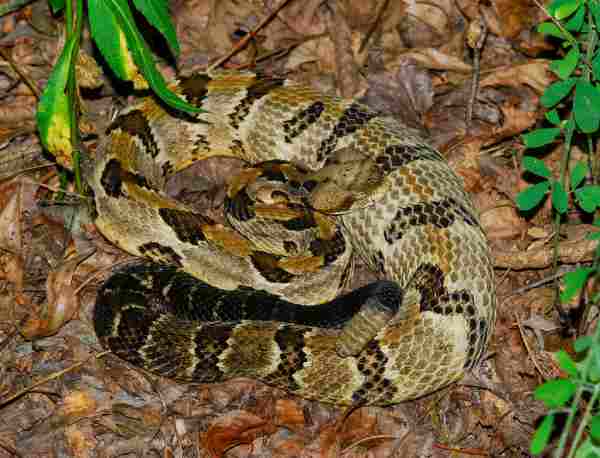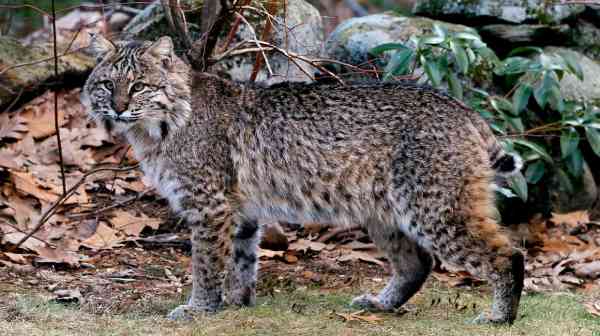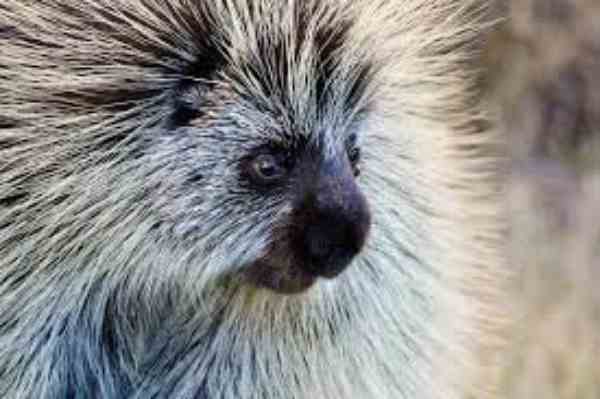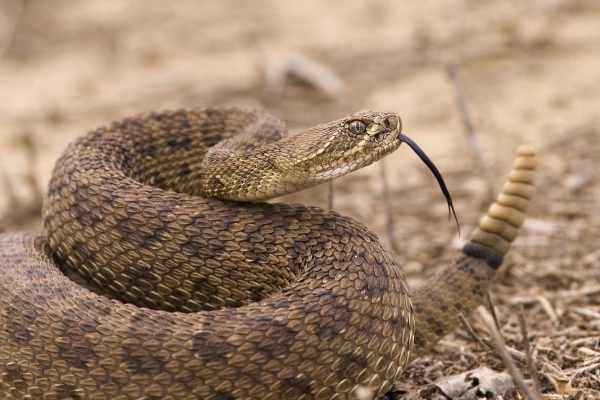Nestled within the heart of upstate New York, the Adirondack Mountains have long been celebrated for their pristine beauty and untouched wilderness. Towering peaks, lush forests, and shimmering lakes beckon adventurers and nature enthusiasts from far and wide. Yet, beyond the postcard-perfect landscapes lies a hidden world, one inhabited by a variety of creatures whose untamed nature commands respect.
In our quest to explore the untamed, it’s essential to remember that the Adirondacks are home to not just beauty, but also some potentially dangerous animals.
From the elusive but majestic black bear to the stealthy and reclusive timber rattlesnake, these animals are an integral part of the Adirondack ecosystem. In this article, we’ll delve into the fascinating world of dangerous animals in the Adirondacks. We’ll uncover their habits, dispel myths, and, most importantly, equip you with the knowledge you need to safely coexist with these remarkable but potentially perilous creatures.
So, whether you’re a seasoned outdoors person or a curious visitor, read on to discover how to navigate the realm of dangerous animals in the Adirondacks and truly appreciate the wild side of this enchanting region.
Overview of the Rich Biodiversity in the Adirondacks:
The Adirondack Mountains, with their sprawling wilderness and diverse ecosystems, boast an extraordinary wealth of biodiversity. Spanning over six million acres of pristine landscapes, this region is a veritable haven for nature enthusiasts and scientists alike. From the towering peaks to the tranquil lakes and dense forests, the Adirondacks are home to a stunning array of plant and animal life.
Visitors can expect to encounter iconic species like the white-tailed deer, Eastern coyote, and the elusive bobcat. Birdwatchers will revel in the chance to spot bald eagles, loons, and peregrine falcons soaring across the skies.
But the Adirondacks are not just about the charismatic megafauna; they also harbor countless smaller creatures and rare plant species. The bogs and wetlands are inhabited by unique amphibians and reptiles, while the streams teem with trout and salmon. The Adirondacks represent a living tapestry of life, with each thread contributing to the rich, interconnected web of biodiversity that defines this remarkable region.
Highlighting the Diverse Range of Animal Species in the Region:
The Adirondacks stand as a testament to nature’s creativity, harboring a wide and varied tapestry of animal species. These mountains, lakes, and forests serve as a sanctuary for an astounding range of creatures, each finely adapted to its niche within the ecosystem.
Here, you’ll find the iconic and powerful black bear, ambling through the woods, and the playful river otter, frolicking in the clear streams. Keep an eye out for the sprightly red fox and the majestic moose, symbols of the region’s untamed spirit.
Birdwatchers will revel in the sight of great horned owls, red-tailed hawks, and the melodious warblers that grace the Adirondack skies. Beneath the water’s surface, a hidden world thrives, with brook trout, lake sturgeon, and other aquatic species carving their place in the region’s aquatic ecosystems. The Adirondacks, with their mosaic of habitats, offer a glimpse into the astonishing diversity of life that can be found in this rugged and enchanting landscape.
Eastern Timber Rattlesnakes:

Eastern Timber Rattlesnakes, though venomous, are reclusive and seldom pose a threat to humans. Found primarily in the southeastern Adirondacks, they are an essential part of the ecosystem, helping control rodent populations.
If you encounter one, maintain a safe distance and do not provoke it. These snakes will typically give warnings by rattling their tails before striking, so listen for that distinctive sound and back away slowly. Eastern Timber Rattlesnakes play a vital role in the balance of the Adirondack ecosystem, and respecting their presence helps protect both wildlife and people.
Black Bears:

Black bears, the largest mammals in the Adirondacks, are majestic creatures that play an integral role in the ecosystem. While these bears are typically shy and avoid humans, it’s crucial to exercise caution when camping or hiking in bear country. Black bears have an incredible sense of smell and can be attracted to food odors, so proper food storage is essential to prevent encounters.
If a bear is encountered, it’s important to remain calm, speak softly, and slowly back away without turning your back on the bear. Never approach or feed a bear, and keep a safe distance, especially if cubs are present. By respecting these powerful animals and their habitat, we can coexist harmoniously with black bears in the Adirondacks.
Coyotes:

Coyotes are adaptable and intelligent animals inhabiting the Adirondacks. While they are usually shy and avoid humans, it’s essential to understand their behavior to prevent conflicts. Coyotes can become aggressive if they feel threatened or if humans inadvertently provide them with food sources. To coexist peacefully, secure your food when camping, avoid leaving pet food outside, and ensure small pets are supervised. If you encounter a coyote, maintain your distance, make noise, and wave your arms to deter it from approaching. By practicing responsible wildlife management and respecting these adaptable canids, we can minimize potential issues with coyotes in the Adirondacks.
Bobcats:

Bobcats, elusive and rarely seen in the Adirondacks, are an important part of the park’s ecosystem. These shy felines play a role in controlling small mammal populations. While they are generally solitary and avoid human contact, it’s crucial to respect their space if you happen to encounter one. Keep your distance, avoid sudden movements, and observe quietly from a safe distance. Bobcats are not typically aggressive toward humans, and with responsible behavior, we can continue to enjoy the privilege of sharing the wilderness with these magnificent creatures while ensuring their protection.
Eastern Massasauga Rattlesnakes:

The Eastern Massasauga Rattlesnake is a small, venomous snake found in limited areas within the Adirondacks. Encounters with these snakes are exceedingly rare, as they are generally reclusive. If you do encounter one, exercise caution by maintaining a safe distance and allowing it to move away peacefully. Avoid handling or harassing the snake, as it may result in defensive behavior. Understanding the presence of these snakes in specific areas and practicing respectful coexistence is essential to their preservation in the Adirondacks.
Moose:

Moose are iconic residents of the Adirondacks and are known for their imposing size and unique appearance. While they are generally non-aggressive, moose can become dangerous if they feel threatened or cornered, particularly during the calving season. It’s crucial to admire these magnificent creatures from a safe distance and avoid approaching them or blocking their path. Respect their space and the natural behaviors of moose, and you can enjoy the privilege of observing these majestic animals in their natural habitat while ensuring their safety and yours.
Porcupines:

While not dangerous in a conventional sense, porcupines are notable for their quills, which they can use defensively. To avoid porcupine encounters, give them space and do not approach or attempt to touch them. Keep pets under control, as curious dogs can get quills embedded in their snouts or paws. Porcupines are fascinating creatures that play a role in the Adirondacks’ ecosystem, and by respecting their presence, we can coexist peacefully with these unique animals.
Ticks and Insects:

In the warmer months, the Adirondacks can be plagued by biting insects like mosquitoes and black flies. While not dangerous in the traditional sense, these insects can be a nuisance and may transmit diseases. To protect yourself, use insect repellent, wear protective clothing, and check for ticks after outdoor activities. Ticks, in particular, can transmit diseases like Lyme disease, so vigilance is crucial to enjoying the Adirondacks safely and comfortably.
Safety Tips for Adirondack Visitors:
While the Adirondacks are a nature lover’s paradise, it’s essential to respect the wilderness and be prepared for the potential challenges it presents. Safety should be paramount when exploring this pristine environment. First and foremost, visitors should inform someone of their plans and expected return time when embarking on a hike or outdoor adventure. Carrying essential gear such as maps, compasses, extra clothing, and sufficient water is crucial, as the weather in the Adirondacks can change rapidly.
Wildlife encounters, although usually peaceful, should be handled with care. Keep a safe distance from animals, never feed them, and store food securely to prevent attracting wildlife to your campsite. When hiking, stay on marked trails to minimize impact on fragile ecosystems. In winter, when snow blankets the region, be aware of the dangers of avalanches and take necessary precautions.
Additionally, familiarize yourself with any specific safety regulations and guidelines provided by the Adirondack Park Agency and the New York State Department of Environmental Conservation to ensure a safe and enjoyable visit. By adhering to these safety tips, you can fully appreciate the Adirondacks’ natural beauty while minimizing potential risks.
Park Regulations and Conservation Efforts:
Preserving the pristine beauty and ecological integrity of the Adirondack Park is of paramount importance. The park is governed by a complex web of regulations and conservation efforts aimed at safeguarding its unique natural heritage. These regulations encompass everything from camping permits and fire restrictions to guidelines on waste disposal and wildlife protection.
The Adirondack Park Agency (APA) plays a central role in regulating land use and development within the park’s boundaries, ensuring that growth and expansion do not compromise its ecological integrity. Conservation organizations and local initiatives work tirelessly to protect critical habitats, support sustainable forestry practices, and promote responsible recreation.
Visitors to the Adirondacks should familiarize themselves with these regulations and take their conservation responsibilities seriously. Leave no trace, practice responsible camping and hiking, and support local efforts to preserve this extraordinary natural wonder for future generations to enjoy.
Final Words:
The Adirondacks are not just a destination; they are a living testament to the wonders of the natural world. With their rich biodiversity, diverse animal species, and commitment to conservation, the Adirondack Mountains offer a profound connection to the wild, reminding us of the importance of preserving such treasures for generations to come. Whether you seek adventure, solitude, or simply a deep appreciation for nature’s beauty, the Adirondacks have it all. As you explore this enchanting region, remember to tread lightly, stay safe, and leave behind only footprints, ensuring that this wilderness remains a thriving sanctuary for both wildlife and those who seek to experience its magic.
Reference:
- https://visitadirondacks.com/about/adirondack-animals
- https://www.dec.ny.gov/animals/6973.html
- https://digitalcollections.union.edu/s/home/item-set/3213

Jeevan Kodiyan
An animal enthusiast with an interest in zoology, studying the behavior and activities of animals in the wild habitat. I work on research projects related to species conservation and endangered species protection. I also leverage zoology to become an educator, educating others about the importance of protecting our natural environment and the beauty of animals in their natural habitats.









